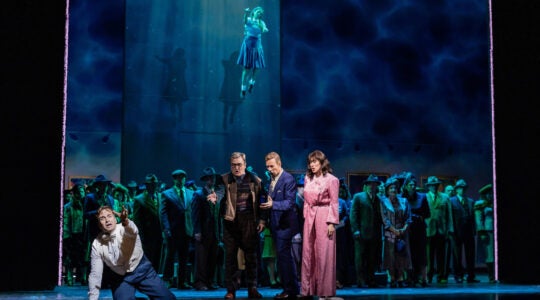Two 17th-century paintings have been taken off the auction block after a Holocaust art restitution organization determined that they had been looted from a German Jew’s collection in France during World War II.
The two paintings, believed to be by Dutch artist Ambrosius Bosschaert, were set to be sold at an auction house in Newark, Ohio, this month until a tip submitted to the Monuments Men and Women Foundation prompted the group to intervene.
The foundation, which is dedicated to recovering European artworks stolen during World War II and is named for the Allied military group, researched the pieces and discovered that they originally belonged to the family of Adolphe Schloss, a German Jew whose 333-work collection was seized and divided by the Nazis during World War II.
The discovery of the two paintings comes weeks after Argentine police recovered a painting that the Nazis looted from a Dutch Jewish art dealer during the Holocaust.
The painting, “Portrait of a Lady” by Giuseppe Ghislandi, was first discovered last month in photos of a real estate listing by the daughter of a Nazi finance official who fled to Argentina after World War II.
Now, the paintings in the auction in Ohio underscore how many looted works have yet to be recovered and the range of circumstances in which they are being found.
The Schloss collection, including the two paintings discovered in Ohio, was stored at Hitler’s headquarters in Munich before being stolen in the final days of the war as Allied forces entered the city. Schloss’ children survived (he had died in 2010) but were reunited with only some of their art.
After receiving the tip about the art sale in Ohio, Robert Edsel, the founder and chair of the Monuments Men and Women Foundation, flew to Newark to meet with the owners of the Apple Tree Auction Center and explain the painting’s history.
“Within 48 hours of receiving this lead, the Foundation documented the provenance of the works that supports the Schloss ownership, inspected the two paintings in person, attained the cooperation of the auction house to remove the pictures from their sale, and reached out to the attorney for the Schloss heirs,” Edsel said in a statement. “We look forward to completing this collaborative approach to resolving this matter and we hope they will return to the Schloss family soon.”
The two still-life oil paintings of flowers were listed as unclaimed property on the auction house’s website, which has not disclosed the name of the consignor to the foundation.
Looted paintings could have wound up there in a variety of ways. Some Nazis — including John Demjanjuk, convicted in 2011 of war crimes related to 27,000 murders at the Sobibor concentration camp — wound up in Ohio and elsewhere in the Midwest. But looted art also came home on occasion with U.S. soldiers as souvenirs of their time liberating Europe from the Nazis.
The foundation is seeking to obtain the name of the bank that owned the safety deposit box so they can turn over custody of the paintings to the Schloss family.
The highest bids for the paintings were listed on the auction house’s website as $3,250 and $225, but Edsel told Art News that the paintings could be valued at over $500,000.
“These two paintings surfaced at a small auction house in the Midwest, but it could have happened anywhere,” Anna Bottinelli, the foundation’s president, said in a statement. “Hundreds of thousands of cultural objects looted during WWII are still missing. Some are in the United States, tucked away in attics, hanging on walls, and stuffed in unopened boxes, passed down through generations.”
JTA has documented Jewish history in real-time for over a century. Keep our journalism strong by joining us in supporting independent, award-winning reporting.





